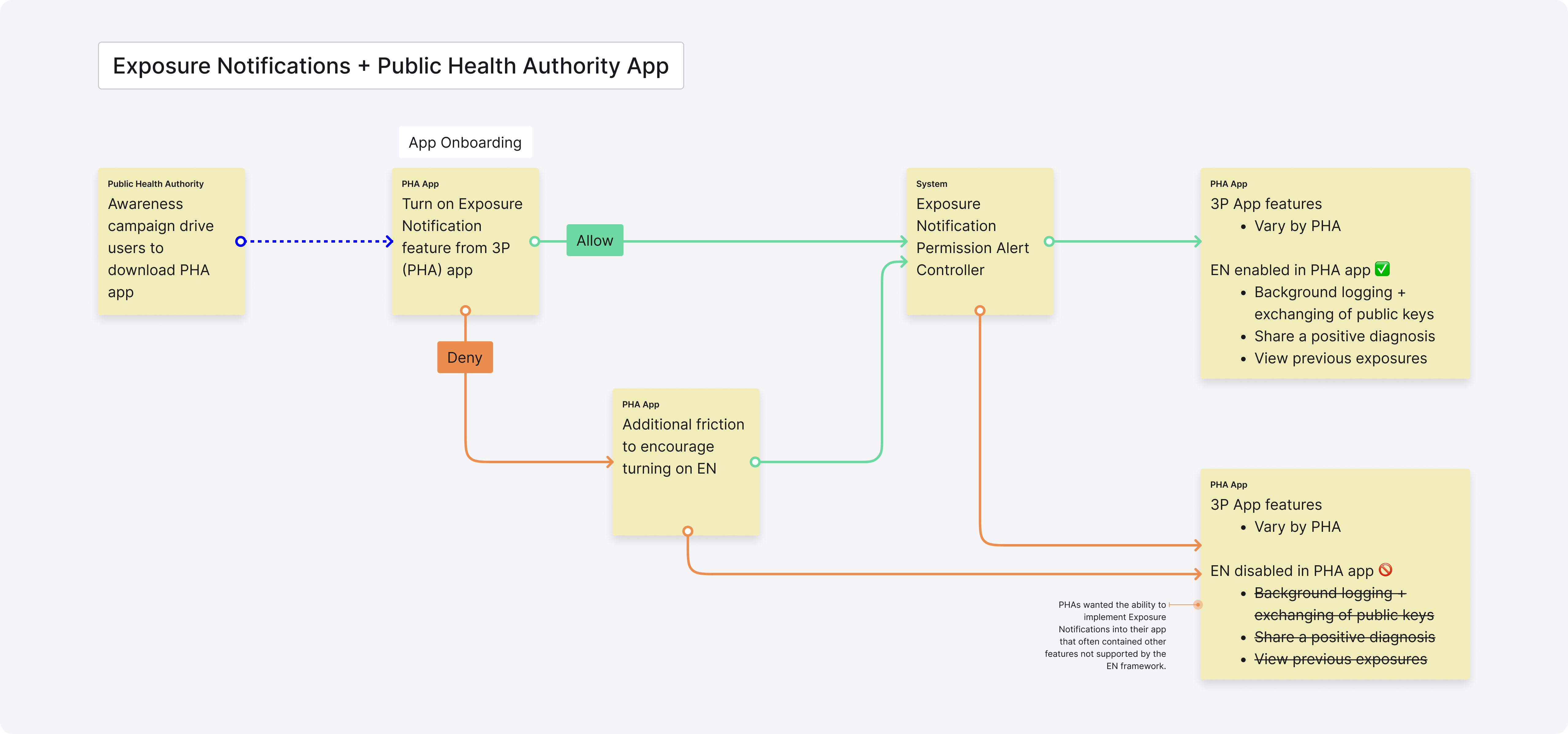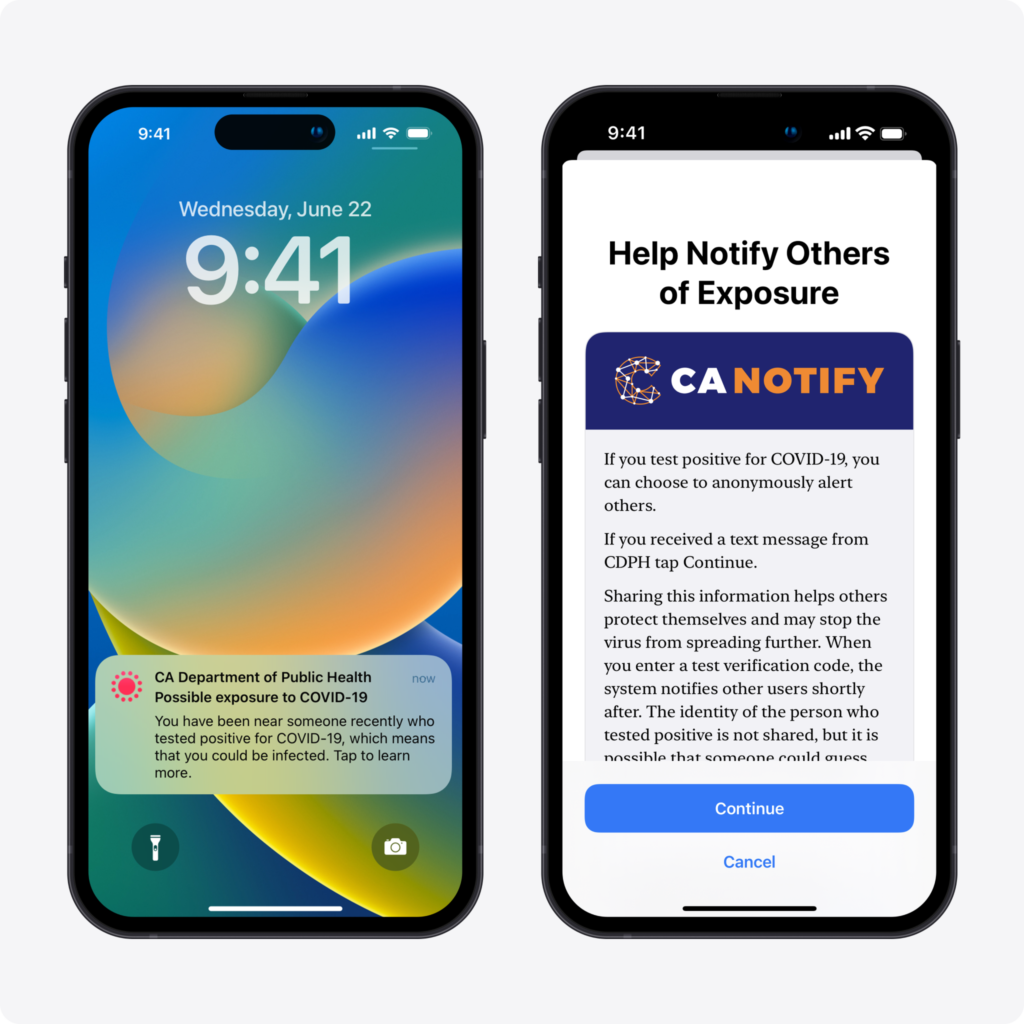
Overview
I volunteered to help a small group of doctors and developers at Apple develop a tool to track COVID-19 exposures. As the project demonstrated significant potential in combating COVID-19, it expanded to include Google, the World Health Organization, and numerous health authorities worldwide.
As a member of the core design team, I worked on Exposure Notifications until it was shipped as a native feature as part of iOS 13.7 in September 2020.

Systems + IA
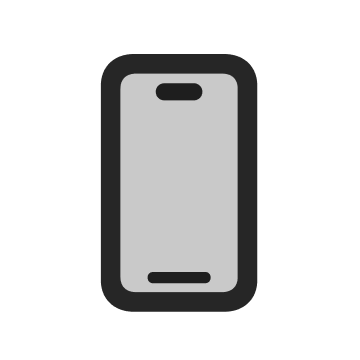
UI/UX

UX Copy
System Design
One of the more complex tasks was figuring out how to meet the requirements for public health authorities (PHAs) around the world. The tech stack was one thing, but meeting the definition of an exposure during an ongoing pandemic was another. This issue, among many, challenged us to create a system that would be composed of two phases: first releasing a reference app, and second as a native feature in iOS.
Enabling Exposure Notifications in an private labeled PHA app
Phase 1: Reference App
One of the standout opportunities on this project was the chance to design and develop a reference application that exemplified best practices in UX for public health authorities (PHAs). This allowed us to showcase the most effective and user-friendly approaches for this important audience.
During this phase of the project, we worked closely with Google to create a cohesive UX across iOS and Android platforms while utilizing the native UI systems of each. We paid careful attention to design elements such as CTA buttons to minimize the risk of miscommunication from public health authorities. Our goal was to design an intuitive and user-friendly experience that would reduce the potential for errors or misunderstandings.
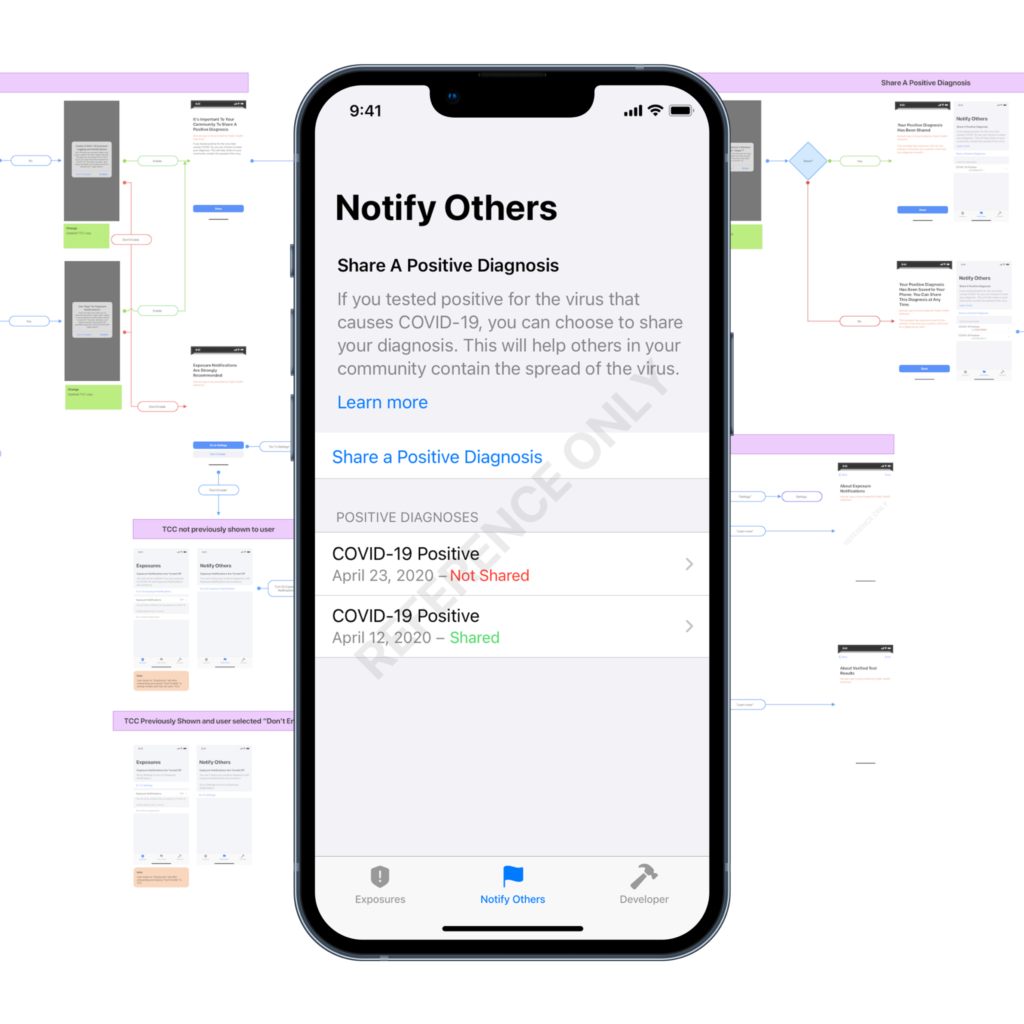
Phase 2: Exposure Notifications Express
The integration of the Exposure Notification framework into iOS as a native capability (ENX) was the last major step in the process. It allowed users to participate in the program without having to download a separate app.
Exposure Notifications as they appear in iOS 16.2
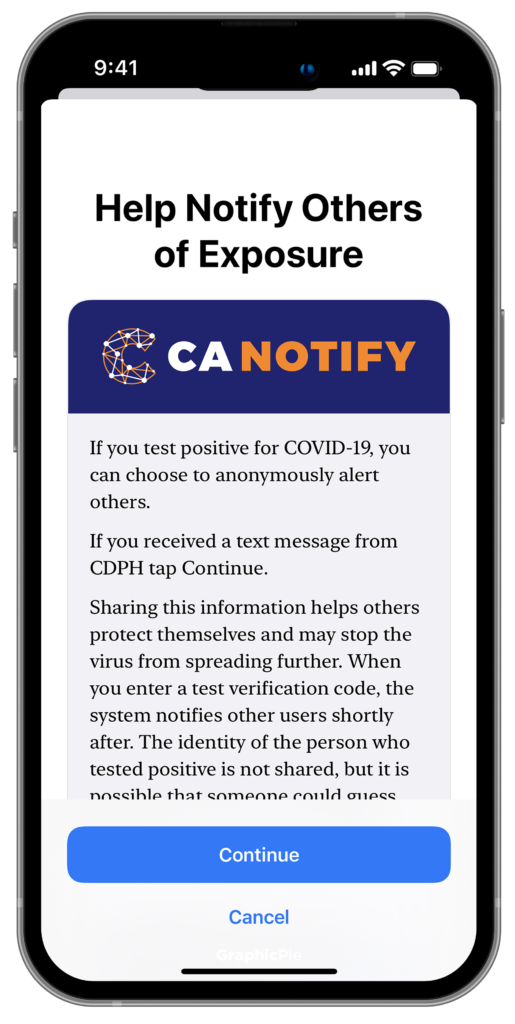
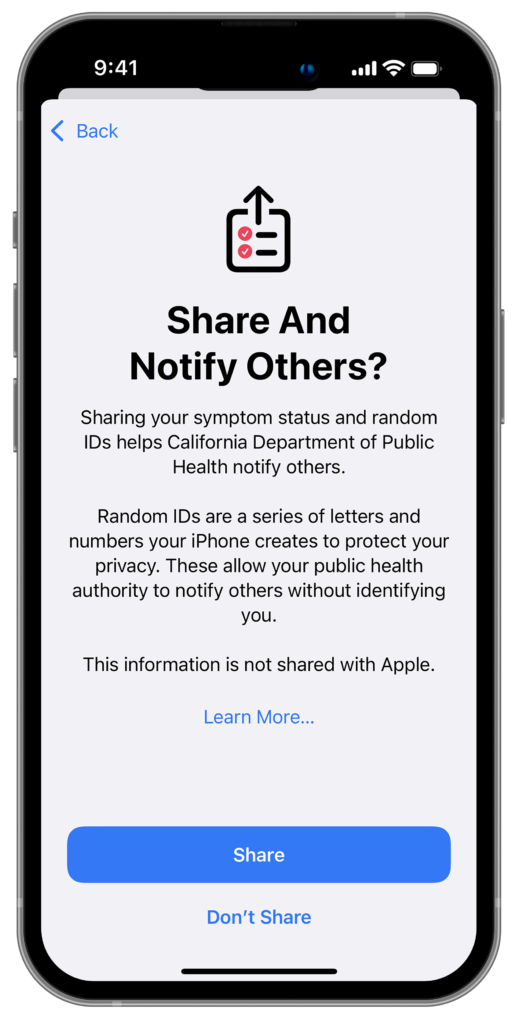
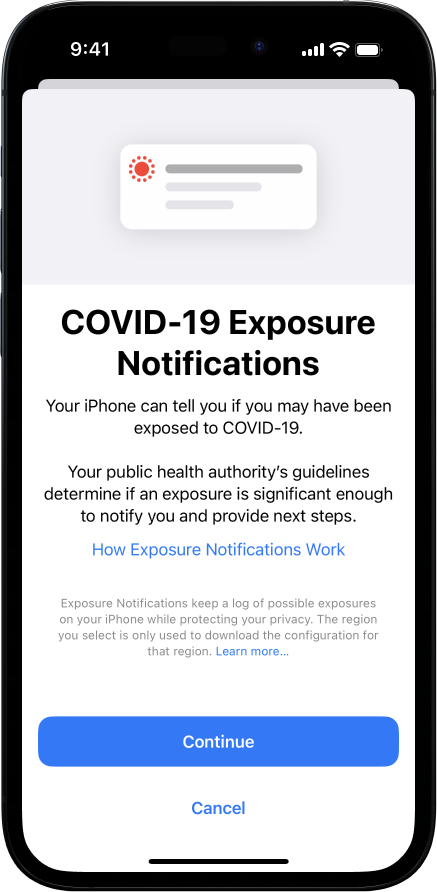
Results
In a recent study published in Nature1, researchers found that a model of COVID-19 Exposure Notifications with only 15% population participation reduced infections and deaths by 8% and 6%, respectively. This data suggests that implementation of Exposure Notifications can complement traditional contact tracing and may be especially valuable in the United States where the COVID-19 virus is widespread and participation in public health interventions is limited.
Also in Nature2, health officials in the UK found that 28% of the population regularly used the National Health System COVID-19 app with 6% of users notified of an exposure through the app subsequently testing positive for the virus. This is a similar result expected from traditional contact tracing but does not require the same labor-intensive infrastructure. The number of COVID-19 cases averted through use of the app was estimated to be between 284,000 and 594,000. The authors concluded that “approximately one case was averted for each case consenting to notification of their contacts” or rather – for everyone who agreed to share a positive diagnosis, at least one case was averted.
2. Wymant, C., Ferretti, L., Tsallis, D. et al. The epidemiological impact of the NHS COVID-19 app. Nature 594, 408–412 (2021). https://doi.org/10.1038/s41586-021-03606-z
Contact me to learn more.
Much of my work is still covered by an NDA. Please reach out if you’re interested in learning more about my process, specifics about my role, or anything else.
You can also find me on LinkedIn.
